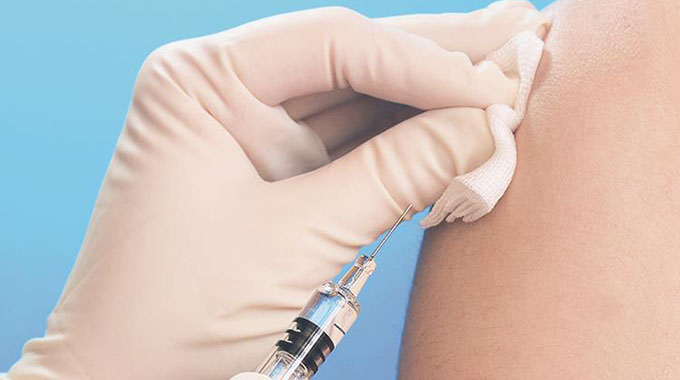Why the yellow fever vaccine is important

Rumbidzayi Zinyuke
Health Buzz
Hundreds of Zimbabwean small scale business people traverse the 1 500 kilometres between Harare and the Tanzanian city of Dar es Salaam every month.
While the nature of their businesses will differ, their travel requirements are the same. None of them can enter Tanzania without a yellow fever vaccination card.
Many people may think this is just one unreasonable requirement and will just do it because they want to proceed with their business.
After all, it is a once off process.
It is not only Tanzania that requires people coming in to get vaccinated against yellow fever.
Other countries that require proof of yellow fever vaccination include Angola, Burundi, Democratic Republic of Congo, Ghana and Uganda, among many others.
Others have yellow fever vaccine requirements depending on the country one is travelling from or have recently travelled to.
Zimbabwe, Zambia and South Africa only require a yellow fever certificate if one has travelled or lived in any of the countries that are considered high risk areas.
While Zimbabweans are getting vaccinated against yellow fever, most are only doing it to have access to the countries they want to visit.
What they do not know is that this is done to protect them from getting the disease and prevent them from spreading it in the country they have visited.
Not many know about the disease, how it presents or how it spreads.
This week we will talk about why that yellow fever vaccination certificate is not just a pass into another country, but an important way to protect people when they travel.
What is yellow fever?
Yellow fever is a serious, potentially deadly flu-like disease spread by the type of mosquitoes that also transmit dengue and Zika viruses.
The disease is characterised by a high fever and jaundice (yellowing of the skin and eyes), which is where it derives its name ‘yellow fever’.
Yellow fever is most prevalent in tropical areas of Africa as well as Central America and South America and cannot be cured. It is, however, prevented through the yellow fever vaccine.
The disease develops quickly, with symptoms occurring three to six days after exposure.
The initial symptoms of the infection are similar to those of flue including muscle pain accompanied with a backache, headache, loss of appetite, and nausea or vomiting.
In most cases, symptoms disappear after three or four days but there are people who enter the second phase of the fever.
Then, the high fever returns and several body systems are affected, usually the liver and the kidneys.
In this phase, people are likely to develop jaundice, pass dark urine and experience abdominal pain with vomiting.
Bleeding can occur from the mouth, nose, eyes or stomach. Half of the patients who enter the toxic phase die within seven to 10 days.
According to experts, yellow fever is difficult to diagnose, especially during the early stages. A more severe case can be confused with severe malaria, viral hepatitis, other haemorrhagic fevers, dengue and poisoning.
At least 47 countries in Africa (34) and Central and South America (13) are either endemic for, or have regions that are endemic for, yellow fever.
A modelling study based on African data sources estimated the burden of yellow fever in 2013 was 84 000 to 170 000 severe cases and 29 000 to 60 000 deaths.
Occasionally travellers who visit yellow fever endemic countries bring the disease to countries free from yellow fever.
This is why countries then demand proof of vaccination against yellow fever, particularly if travellers come from, or have visited yellow fever endemic areas.
Treatment
Good and early supportive treatment in hospitals improves survival rates.
There is currently no specific anti-viral drug for yellow fever but specific care to treat dehydration, liver and kidney failure, and fever improves outcomes. Associated bacterial infections can be treated with antibiotics.
But prevention is better.
For those people who travel often, the yellow fever vaccine is sufficient to grant sustained immunity and life-long protection against yellow fever disease.
Vaccination is the only way to prevent yellow fever.
The yellow fever 17D vaccine is among the most effective vaccines ever made.
The vaccine is given as a single shot and it contains a live, weakened version of the virus that helps the body create lifelong immunity.
The Centres for Disease Control and Prevention (CDC) suggests that people between nine months and 59 years old traveling to or living in an area where the risk of yellow fever is present should be vaccinated.
The vaccine provides effective immunity within 10 days for 80 percent to 100 percent of people vaccinated.
Action to end Yellow Fever
The Eliminate Yellow Fever Epidemics (EYE) Strategy launched in 2017 was an unprecedented initiative.
With more than 50 partners involved, the EYE partnership supports 40 at-risk countries in Africa and the Americas to prevent, detect, and respond to yellow fever suspected cases and outbreaks.
The partnership is aimed at protecting at-risk populations, preventing international spread, and containing outbreaks rapidly.
By 2026, it is expected that more than 1 billion people will be protected against the disease.
The global EYE Strategy is guided by three strategic objectives; to protect at-risk populations, prevent international spread of yellow fever and contain outbreaks rapidly.
These objectives are underpinned by five competencies of success that include affordable vaccines and sustained vaccine market, strong political commitment at global, regional and country levels, high-level governance with long-term partnerships, synergies with other health programmes and sectors and research and development for better tools and practices.
The EYE strategy is comprehensive, multi-component and multi-partner.
In addition to recommending vaccination activities, it calls for building resilient urban centres, planning for urban readiness, and strengthening the application of the International Health Regulations (2005).
The partnership supports yellow fever high and moderate risk countries in Africa and the Americas by strengthening their surveillance and laboratory capacity to respond to yellow fever cases and outbreaks. EYE partners also support the implementation and sustainability of routine immunization programmes and vaccination campaigns (preventive, pre-emptive, reactive) whenever and wherever needed.
It is expected that by the end of 2026, more than one billion people will be protected against yellow fever through vaccination.
With the rate at which Zimbabweans travel across the globe, it is wise to ensure that they are vaccinated. That way they remain protected wherever they go.
Despite the disease not being endemic, it can find its way here so it would be ideal to ensure that does not happen.
After all, diseases have no boundaries!
Feedback: [email protected]










Comments